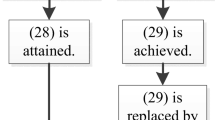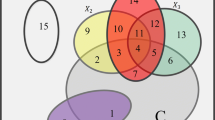Abstract
Feature selection is an important preprocessing process in machine learning. It selects the crucial features by removing irrelevant features or redundant features from the original feature set. Most of feature selection algorithms focus on maximizing relevant information and minimizing redundant information. In order to remove more redundant information in the evaluation criteria, we propose a feature selection based on mutual information with correlation coefficient (CCMI) in this paper. We introduce the correlation coefficient in the paper, and combine the correlation coefficient and mutual information to measure the relationship between different features. We use the absolute value of the correlation coefficient between two different features as the weight of the redundant item denoted by the mutual information in the evaluation standard. In order to select low redundancy features effectively, we also use the principle of minimization in the evaluation criteria. By comparing with 7 popular contrast algorithms in 12 data sets, CCMI has achieved the highest average classification accuracy for two classifiers of SVM and KNN. Experimental results show that our proposed CCMI has better feature classification capability.














Similar content being viewed by others
References
Wang Z, Li M, Li J (2015) A multi-objective evolutionary algorithm for feature selection based on mutual information with a new redundancy measure. Inf Sci 307:73–88
Bennasar M, Hicks Y, Setchi R (2015) Feature selection using joint mutual information maximisation. Expert Syst Appl 42:8520–8532
Hoque N, Bhattacharyya DK, Kalita JK (2014) MIFS-ND: A mutual information-based feature selection method. Expert Syst Appl 41:6371–6385
Zhou H, Guo J, Wang Y (2016) A feature selection approach based on term distributions. Springerplus 5(1):1–14
Das SK, Das SR (2001) Wrappers and a boosting-based hybrid for feature selection. In: Proceedings of the eighteenth international conference on machine learning, pp 74–81
Maldonado S, Weber R (2009) A wrapper method for feature selection using support vector machines. Inf Sci 179:2208–2217
Jiang L, Kong G, Li C (2019) Wrapper framework for test-cost-sensitive feature selection. IEEE Trans Sys Man Cybern Sys:1–10
Zhu QH, Bin YY (2018) Discriminative embedded unsupervised feature selection. Patt Recogn Lett 112:219–225
Han J, Kamber M, Pei J (2011) Data mining: concepts and techniques, 3rd edn. Morgan Kaufmann, Burlington
Vinh NX, Zhou S, Chan J, Bailey J (2016) Can high-order dependencies improve mutual information based feature selection? Patt Recogn 53:46–58
Peng H, Fan Y (2017) Feature selection by optimizing a lower bound of conditional mutual information. Inf Sci 418-419:652–667
Lewis DD (1992) Feature selection and feature extraction for text categorization. In: Proceedings of the workshop on speech and natural language. Association for Computation Linguistics, pp 212–217
Battiti R (1994) Using mutual information for selecting features in supervised neural net learning. IEEE Trans Neural Netw 5:537–550
Peng H, Long F, Ding C (2005) Feature selection based on mutual information: criteria of max-dependency, max-relevance, and min-redundancy. IEEE Trans Patt Anal Mach Intell 27(8):1226– 1238
Lin D, Tang X (2006) Conditional infomax learning: an integrated framework for feature extraction and fusion. In: European Conference on computer version, pp 68–82
Yang HH, Moody J (1999) Feature selection based on joint mutual information. In: Proceedings of international ICSC symposium on advances in intelligent data analysis, pp 22–25
Wang J, Wei JM, Yang Z, Wang SQ (2017) Feature selection by maximizing independent classification information. IEEE Trans Knowl Data Eng 29(4):828–841
Gao W, Hu L, Zhang P et al (2018) Feature selection considering the composition of feature relevancy. Patt Recogn Lett 112: 70–74
Brown G, Pocock A, Zhao MJ, Lujan M (2012) Conditional likelihood maximisation: a unifying framework for information theoretic feature selection. J Mach Learn Res 13(1):27–66
Zhou HF, Zhang Y, Zhang YJ, Liu HJ (2018) Feature selection based on conditional mutual information: minimum conditional relevance and minimum conditional redundancy. Appl Intell 49:883–896
Asuncion A, Newman DJ (2007) UCI machine learning repository, University of California, Irvine, School of Information and Computer Science. http://www.ics.uci.edu/mlearn/MLRepository.html
Borah P, Gupta D (2020) Unconstrained convex minimization based implicit Lagrangian twin extreme learning machine for classification (ULTELMC). Appl Intell 50:1327–1344
Gupta D, Sarma HJ, Mishra K, Prasad M (2019) Regularized Universum twin support vector machine for classification of EEG signal. In: IEEE international conference on systems, man and cybernetics (SMC), pp 2298–2304
Adhikary D, Das GD (2020) Applying over 100 classifiers for churn prediction in telecom companies. Multimedia Tools and Applications
Borah P, Gupta D (2020) Functional iterative approaches for solving support vector classification problems based on generalized Huber loss. Neural Comput Appl 32:9245–9265
Gupta D, Borah P, Prasad M (2017) A fuzzy based Lagrangian twin parametric-margin support vector machine (FLTPMSVM). In: IEEE symposium series on computational intelligence (SSCI), pp 1–7
Demišar J, Schuurmans D (2006) Statistical comparisons of classifiers over multiple data sets. J Mach Learn Res 7(1):1–30
Acknowledgements
The corresponding author would like to thank the support from the National Key Research and Development Plan under the Grant of 2017YFB1402103, the National Natural Science Foundation of China under the Grant of 61971347, the Key Research and Development Program of Shaanxi under the Grant of 2021JZ-49, the Education Department of Shaanxi Province Key Laboratory Project under the Grant of 15JS079, Xi’an Science Program Project under the Grant of 2020KJRC0094.
Author information
Authors and Affiliations
Corresponding author
Additional information
Publisher’s note
Springer Nature remains neutral with regard to jurisdictional claims in published maps and institutional affiliations.
Rights and permissions
About this article
Cite this article
Zhou, H., Wang, X. & Zhu, R. Feature selection based on mutual information with correlation coefficient. Appl Intell 52, 5457–5474 (2022). https://doi.org/10.1007/s10489-021-02524-x
Accepted:
Published:
Issue Date:
DOI: https://doi.org/10.1007/s10489-021-02524-x




